Mahavir Jayanti Information For Students: India has produced many great saints and spiritual leaders. The days commemorating the birthdays or the incidents in the lives of these great sons of the soil, are considered especially holy. The birthday of Lord Mahavira or Mahavir Jayanti is observed by both the Digambra (Sky-clad) and Svetambra (White-clad) Jains on the 13th day of the bright half of the Chaitra month (March-April).
Mahavir Jayanti: Birth Anniversary of Lord Mahavira
Mahavir Jayanti or birth anniversary is celebrated throughout the Jain world in the country, but it is celebrated with special charms in Rajasthan and Gujarat, where the Jains are relatively in greater number than in the other states. Jaina Shrines at Girnar and Palitana in Gujarat and at Mahavirji in Rajasthan. Pawapuri and Vaishali Bihar are the other such centers. Vaishali being his birth place, a grand festival is held there, and it is known as Vaishali Mahotsava.
On this auspicious day grand chariot processions with the images of Mahavira are taken out, rich ceremonies in the temples are held, fasts and charities are observed, Jaina scriptures are read and a some places grand fairs are set up.
Mahavira, the great teacher and the 24th Tirthankara of Jainism was contemporary of Lord Buddha. His mother Trisala or Priyakarini had a series of miraculous dreams heralding the birth of Mahavira. Vardhama achieved enlightenment under an Asoka tree after two and a half days fasting and meditation. Then he stripped himself of all his clothes and wore none thereafter, but Svetambras believe that Indra then Presented him a white robe. After his enlightenment he gave away all his wealth and possessions and owned nothing. Mahavira underlined the importance of austerity and complete non-violence as the essential means of spiritual evolution and salvation.
Jainism:
Jains form less than one percent of the Indian population. For centuries, Jains are famous as community of traders and merchants. The states of Gujarat and Rajasthan have the highest concentration of Jain population in India. The Jain religion is traced to Vardhamana Mahavira (The Great Hero 599-527 B.C.). Mahavira was the twenty-fourth and last of the Jain Tirthankaras. Mahavira was born in a ruling family of Vaishali, located in the modern state of Bihar, India. At the age of thirty, Mahavira renounced royal life and devoted himself to the task of discovering the meaning of existence. At the age of 42 he attained enlightenment and spent the rest of his life meditating and preaching Jainism.
Jainism rests on a real understanding of the working of karma, its effects on the living soul and the conditions for extinguishing action and the soul’s release. Jainism considers the soul as a living substance that combines with various kinds of non-living matters. The Jain religion rests on complete inactivity and absolute nonviolence (ahimsa) against all living beings. It is evident from the Jain monks and nuns wearing face masks to avoid inhaling small organisms. It is for the same reason all practicing Jains try to remain vegetarians.
The Jain community evolved into two main divisions- the Digambara or “sky-clad” monks do not wear clothes and the Svetambara or “white-clad” monks and nuns, who wear white clothes and carry bowls for collecting food. For centuries Western and southern India have been Jain strongholds. In the mid-1990s, there were about 7 million Jains, the majority of whom live in the states of Maharashtra (mostly in Bombay), Rajasthan, and Gujarat. Karnataka, conventionally a stronghold of Digambaras, also has a considerable Jain community.
Though the Jain shrines include images of the Tirthankaras, yet they are not worshiped but remembered and revered. Daily rituals of the Jains may include meditation, bathing the images, offering food, flowers and light lamps for the images. It is interesting to note that the Jains also worship local gods and participate in Hindu or Muslim celebrations without compromising their fundamental path. The Jains celebrate the five major events in the life of Mahavira-conception, birth, renunciation, enlightenment, and final release after death.
Major Jain pilgrimage destinations in India are Palitana, Ranakpur, Shravanabelagola, Dilwara Temple, Khandagiri Caves and Udayagiri Caves.
महावीर जयंती (Mahavir Jayanti): जानिए कैसे वर्धमान बन गए तीर्थांकर और दिंगबरधारी?
जैन परंपरा के 24वें और आखिरी तीर्थकर हुए हैं भगवान महावीर स्वामी। उन्होंने अपने हर अनुयायी को पांच व्रतों अहिंसा, सत्य, अस्तेयस ब्रह्मचर्य और अपरिग्रह का पालन करना जरूरी बताया है। हजारों साल पहले दिए गए यह संदेश आज भी सार्थक हैं। इसी के साथ उन्होंने साधु, साध्वी, श्रावक और श्राविका इन चार तीर्थों की स्थापना की थी। इसलिए उन्हें वर्धमान, स्नमति, वीर और अतिवीर के नाम से भी जाना जाता है। भगवान महावीर का जन्म 599 ईसा पूर्व चैत्र मास की शुक्ल पक्ष की त्रयोदशी तिथि को हुआ था इसलिए जैन धर्म के अनुयायी महावीर जयंती मनाते हैं। जैन समुदाय के लोग इस पर्व को बहुत धुमधाम से मनाते हैं लेकिन इस बार कोरोना वायरस के कारण घर पर ही इस त्योहार को मनाया जा रहा है।
वर्धमान था बचपन का नाम:
भगवान महावीर का जन्म बिहार में लिच्छिवी वंश के महाराजा सिद्धार्थ और मां त्रिशाला के यहां हुआ था। इनके बचपन का नाम बर्धमान था। वर्धमान ने ज्ञान प्राप्ति के लिए महज तीस साल की उम्र में राजमहल का सुख और वैभव को त्याग कर दिया था। उन्होंने तपोमय का रास्ता अपना लिया था और साढ़े बारह वर्षों की साधना व तप किया था। उन्होंने अपने तप और ज्ञान से सभी इच्छाओं और विकारों पर काबू पा लिया था, इसलिए उनको महावीर के नाम से पुकारा गया। आमजन के कल्याण और अभ्युदय के लिए महावीर ने धर्म-तीर्थ का प्रवर्तन किया। उन्होंने समाज में व्याप्त कुरूतियों और अंधविश्वासों को दूर करने में योगदान दिया।
इसलिए कहलाए गए तीर्थांकर:
भगवान महावीर ने अहिंसा, तप, संयम, पांच महाव्रत, पांच समिति, तीन गुप्ती, अनेकान्त, अपरिग्रह एवं आत्मवाद का लोगों को संदेश दिया। उन्होंने जैन धर्म के अनुयायियों के लिए उन्होंने पांच व्रत दिए, जिसमें अहिंसा, सत्य, अस्तेय, ब्रह्मचर्य और अपरिग्रह को जीवन के कल्याण के लिए अनिवार्य बताया है। इसके साथ ही साधु, साध्वी, श्रावक और श्राविका नामक चार तीर्थों की स्थापना की थी इसलिए तीर्थकर कहलाए गए। यहां तीर्थों का अर्थ लौकिक तीर्थों से नहीं बल्कि अहिंसा, सत्य दूसरों की साधना द्वारा अपनी आत्मा को ही तीर्थ बनाने से हैं।
जिंदगी में सुकूल देती हैं यह चीज:
महावीर की वाणी के तीन आधारभूत मूल्य अहिंसा, अपरिग्रह और अनेकान्त हैं। ये युवाओं को आज की भागमभाग और तनाव भरी जिंदगी में सुकून की राह दिखाते हैं। महावीर की अहिंसा केवल शारीरिक या बारी न होकर मानसिक और भीतर के जीवन से भी जुड़ी हुई है। जहां अन्य दर्शोंनों की अहिंसा समाप्त होती है, वहां जैन दर्शन की अंहिसा की शुरुआत होती है।
इस तरह मनाई जाती है महावीर जयंती (Mahavir Jayanti):
महावीर जंयती के दिन जैन मंदिरों में महावीर की मूर्तियों का अभिषेक किया जाता है। इसके बाद मूर्ति को रथ पर बैठाकर जुलूस निकाला जाता है लेकिन इस बार कोरोना वायरस की वजह से घरों पर महावरी जयंती मनाने का आदेश दिया गया है। इस दिन गरीब व जरूरतमंद की मदद की जाती है। जैन समाज की ओर से महावीर स्वामी के जन्मदिवस को महावीर जयंती और मोक्ष दिवस को दीपावली के रूप में मनाया जाता है। भगवान महावीर ने जीओ और जीने दो का सिद्धात दिया था। साथ ही यह भी सीख दी कि दूसरों के साथ वही व्यवहार करें, जो खुद के लिए पसंद हो।
 Kids Portal For Parents India Kids Network
Kids Portal For Parents India Kids Network
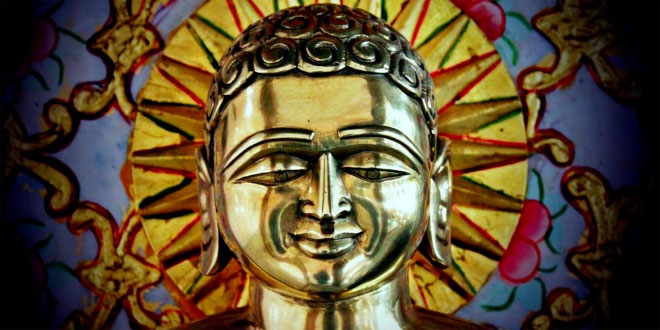
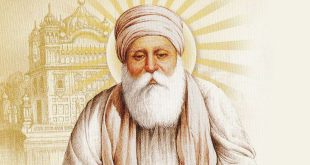

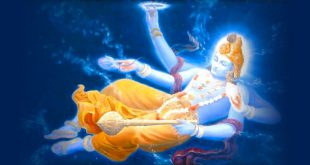
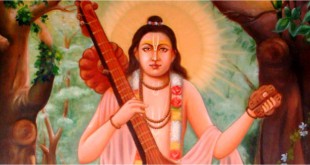
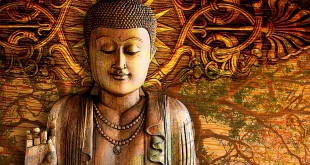
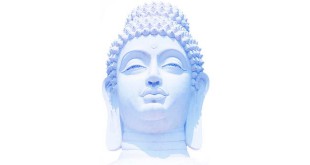

9 comments
Pingback: Mahavir Jayanti Greetings For Students - Kids Portal For Parents
Pingback: Lord Mahavira: Early Life, Ascetic, as a Teacher - Kids Portal For Parents
Pingback: Lord Mahavir Sayings For Students - Kids Portal For Parents
Pingback: Mahavir Jayanti Quotes For Students - Kids Portal For Parents
Pingback: Mahavir Jayanti Culture & Traditions - Kids Portal For Parents
Pingback: Mahavir Jayanti Images: Lord Mahavira Photos - Kids Portal For Parents
Pingback: Danavulapadu Jain Temple, Kadapa District, Andhra Pradesh, India - Kids Portal For Parents
Pingback: Shree Shankheshwar Parshwanath Jain Temple, Gummileru, India - Kids Portal For Parents
Pingback: Shri Devikoop Bhadrakali Shaktipeeth Temple, Kurukshetra, India - Kids Portal For Parents